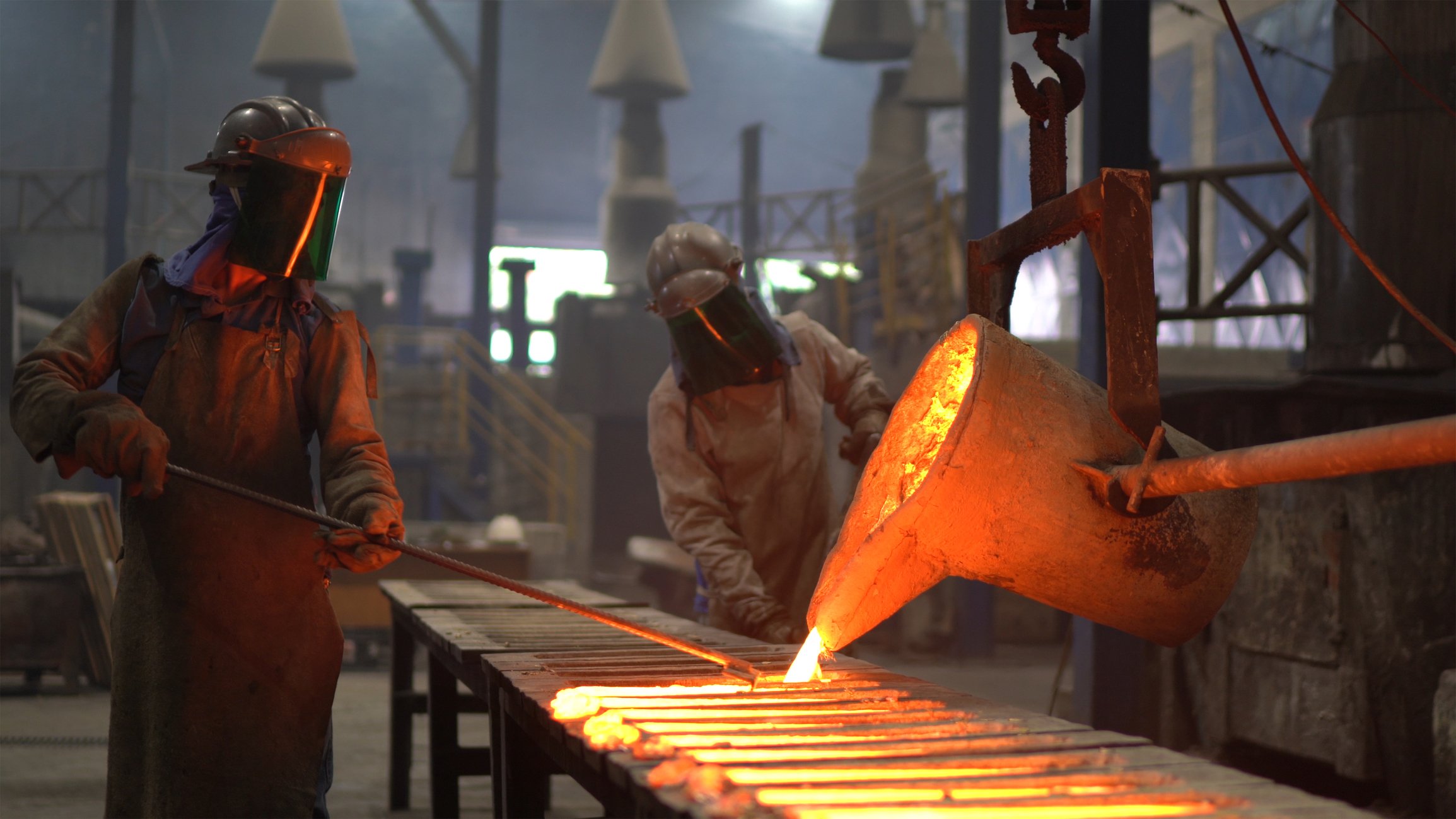U.S. steelmaker Steel Dynamics, Inc. (STLD 1.03%) has been hitting on all cylinders lately. In fact, during the third-quarter earnings conference call CEO Mark Millett noted that the company is very different today than it was roughly a decade ago. The changes the company has made, like increasing diversification and moving up the steel value chain, will serve investors well over time, of course. But it's important to understand exactly what's going on at Steel Dynamics before its record results draw you in.
Impressive numbers
Steel Dynamics' third-quarter net income of $1.69 per share was a record, and up materially from $0.64 in the prior year. It also posted records for earnings from operations, adjusted EBITDA, cash flow from operations, and steel shipments. That last item there being the real driving force of all of the other records, of course.

Image source: Getty Images.
A number of very distinct factors are supporting these records. For starters, steel is an economically driven commodity, and the United States has been growing relatively quickly lately. That's led to robust demand. Looking forward, the CEO noted during the earnings call that "it's important to remember domestic steel inventory levels appear to be balanced and virtually every domestic steel consuming sector is already in good shape or continues to improve." He hinted that 2019 should be a pretty good year as well, if the current industry dynamics continue. In fact, according to the CEO, some of the company's steel fabrication operations had to turn business away because of the already large backlog of orders on the books.
This is a great position to be in, of course, but one that is tightly tied to the economic environment. If the United States should fall into a slump -- or, worse, a full-on recession -- demand for steel will fall and Steel Dynamics' record results will be a thing of the past. Investors will react accordingly and push the shares materially lower. That, however, would likely be a buying opportunity for long-term investors because of the other aspects supporting Steel Dynamics' recent results.
Changing the model
The last downturn in steel started around the time of the deep 2007-to-2009 recession. For those with a short memory, that downturn was particularly bad. Steel Dynamics' bottom line was pushed into the red in 2009, which shouldn't be a surprise given that the construction industry, a key end market for steelmakers, was particularly hard hit during that downturn.
Steel Dynamics, however, didn't sit and lick its wounds during what turned into a long industry malaise. Between 2007 and 2017 the company made five acquisitions. It also undertook four major expansions or upgrades. Management's goal was twofold: to increase diversification and to move up the value chain by increasing its production of higher-margin products. The company's not done, either, with the recent completion of yet another acquisition and another set of expansions and upgrades on the books. It has projects slated out to 2020.
The big picture is summed up in CEO Mark Millett's comment that "our growth-expanded product diversification and market positioning will continue to achieve higher highs and, just as importantly, higher lows driving considerably higher through-cycle cash flow generation capability." Today, the company serves nine major sectors, with roughly 60% of its production considered value added, providing higher margins than commodity products. Essentially, Steel Dynamics has strategically shifted its business so it can better handle the ups and downs of the cyclical steel industry.
The company's $400 million June 2018 acquisition of Heartland Steel Processing is a case in point. Historically the mill has focused on producing just one type of steel, and it had been running at low utilization levels. Steel Dynamics intends to broaden the product lineup and is already shifting demand from other mills it owns nearby to Heartland to increase use. Shifting production around among the mills, meanwhile, should allow for lower costs and higher productivity for the company's four regional facilities as it gives the company the flexibility to make broader changes at all the mills. The end result is expected to be annual synergies of between $10 million and $15 million. This acquisition wasn't about getting bigger for the sake of getting bigger; it was about making the best use of assets so the company would get bigger and better.
A good company, wait for a better price
At the end of the day, Steel Dynamics is a very well-run steel mill with a leadership team that thinks long term. If you are looking to buy a steel company today, you should take a close look, because it is doing quite well. However, the current set of record results suggests that the cyclical industry is soundly in an upturn. While management has been preparing for this period by diversifying and moving up the value chain, the next economic downturn is when the company will really shine by producing "higher lows." But there's a good chance most investors will be so caught up in the downturn that they will likely miss that subtle but important fact. And that should present a much better opportunity for value-conscious investors who are willing to think long term along with Steel Dynamics' management team.







